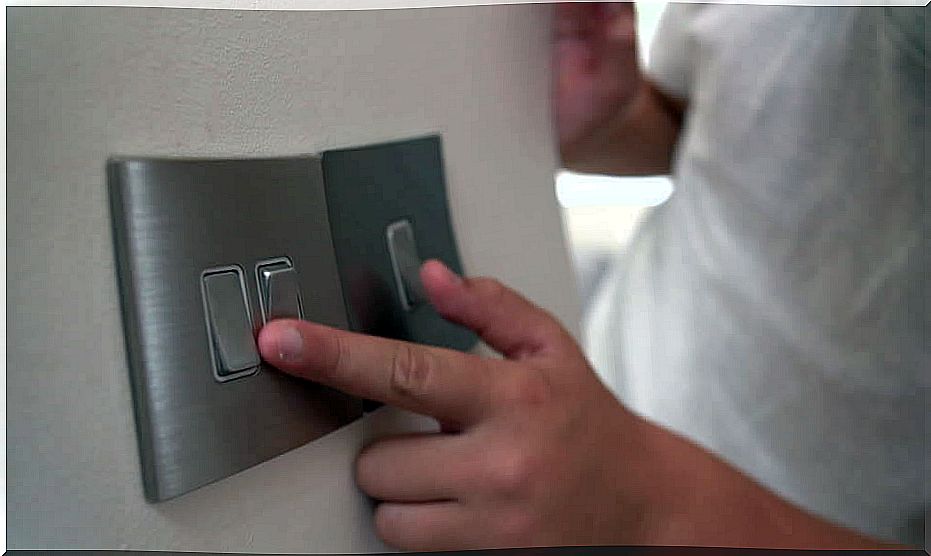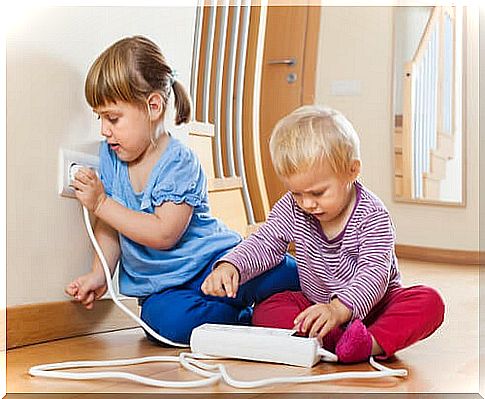Tricks To Keep Children Out Of Sockets

Remember that curiosity knows no risks: caution is advised, especially with electrical outlets.
It is important to know how to prevent children from approaching electrical outlets. Because you, as parents, want to offer your child the best possible security conditions in the household. In this way dangerous accidents are avoided.
According to statistics, accidents caused by burns or electric shock are the fourth most common household accidents. For this reason, it is necessary that we know how to keep our little rascal from harming themselves at an electrical outlet.
Tricks to keep kids away from electrical outlets
The plugs or sockets are devices that allow the passage of electricity: with the plug that we find at the end of cables, such as telephone chargers; and the socket on the wall where the cables are connected.
Both are very attractive to children of all ages. The socket may arouse more curiosity in children: they often try to stick their little fingers into the openings.
Fortunately, there are several safety measures in place to prevent accidents with electrical outlets at home. Here we introduce you to all of the options.
Precautions for cables with plugs
As mentioned earlier, plugs are cables that connect to electrical devices. The safety measures with this type of connector are the following:
- Never leave electric chargers within the reach of children. Also, keep other device cables out of the reach of children.
- If possible, devices should be plugged into sockets that are not at floor level or at a height that the child can reach.
- Never leave the phone charger plugged in when you are finished using it. Children often put objects in their mouths. If you put the cord of the plugged-in charger in your mouth, you could get an electric shock.
- Prevent children from seeing the cables. This will prevent their curiosity from being aroused and from wanting to touch it.
“According to statistics, accidents caused by burns or electric shock are the fourth most common household accidents. ”

Avoid accidents with sockets
The sockets are the ones that are attached to the walls. They are very dangerous for children because they have a tendency to stick their fingers in them or their toys.
The solution to keep the house safe and to distract the child are child safety locks for electrical outlets. You should also cover any sockets that are on the floor or within reach of the child.
You can buy the socket fuses in hardware stores or drug stores. They are available in different price ranges and designs. Ideally, try to buy them the same color as the outlet. So they will go unnoticed in the eyes of the children.
Don’t forget to keep the parental controls safe when you remove them. In this way you prevent your child from putting the socket protector in their mouth.

Avoiding accidents with electrical outlets when we are out
We already know how easy it is to prevent accidents with electrical outlets at home. However, what can we do when we are on the move?
A very effective solution is to cover sockets with tape. At least in the rooms in which the child is staying.
Paper tape is best: because of its color and texture, it will go unnoticed by children.
If for some reason you don’t have the tape, ask the hotel about a band-aid. These also serve to cover the sockets and because of their high adhesion it will be very difficult for children to loosen them.
As you can see, implementing a minimal security measure can be very simple. In this way we avoid moments of shock with our children because of our carelessness and their curiosity. Don’t wait any longer: use these simple tricks and be calmer.









